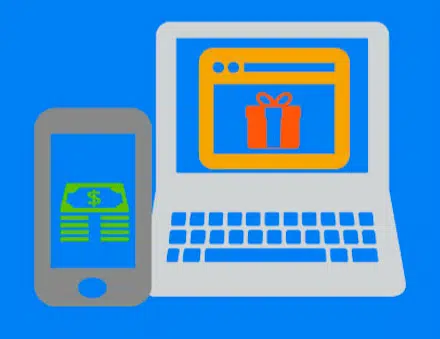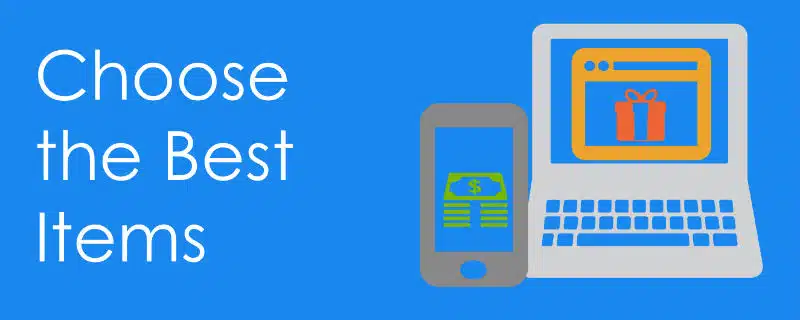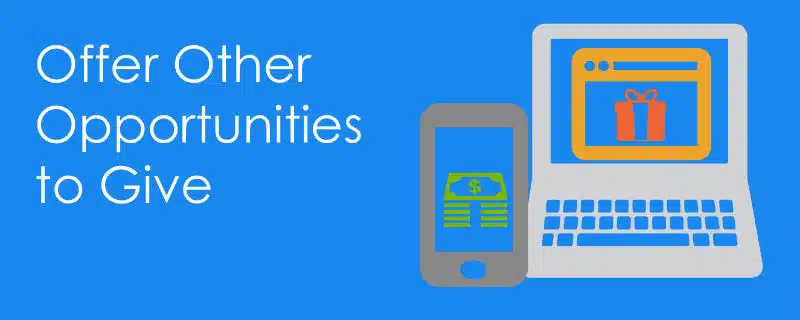4 Best Practices for Running a Nonprofit Silent Auction



Because running a silent auction can be more involved than hosting other fundraising events, many organizations are hesitant to try them out.
However, while they may be more difficult to plan, they can have a high return for your organization if you strategize correctly.
They’re also excellent events for engaging donors, since they’re highly interactive and they give your organization ample opportunity to talk with supporters face to face.
If your organization is looking to both amp up your fundraising and develop stronger donor relationships (which I’m guessing you are!) your organization should definitely consider hosting a silent auction.
Here I’ll cover four best practices that can help your organization get well on your way to silent auction success.
Let me give you a sneak peek of the topics we’ll cover:

Most of the fundraising from silent auctions is done by collecting the highest bids on each item.
Since auctioning off items will constitute a majority of your fundraising, it couldn’t be more important for your organization to ensure that you feature the most amazing items out there!
Exactly which items are “amazing” will depend on your supporters. You can get some insights into what they might like by:
Once you’ve done a little research, you’ll want to apply the knowledge you’ve gleaned to determine exactly which items your organization should feature. (If you need a little inspiration to help you get started, make sure to check out BidPal’s list of 115 Charity Auction Ideas!)
Keep in mind that the best items typically tend to:
With a little research under your belt and these few guidelines in mind, your organization is sure to pick the auction items that will bring in the most funds!
Takeaway: Since a majority of the funds you raise from your silent auction will come from the bidding, your organization should strive to choose the most appealing items out there!

As appealing as your silent auction items might be, their appeal will be limited if you don’t advertise them.
Think about it: being able to view your amazing items is an excellent way of incentivizing more supporters to attend your auction. When they see all the incredible goods and experiences they could potentially walk home with, they won’t want to miss out!
Don’t let this incentive go to waste. Make sure that you thoroughly advertise your items before the event.
The easiest and most cost-effective way to advertise your auction is by putting up an online event site. These sites are generated through auction or event planning software and allow your organization to list descriptions and images of each item.
Online event sites are essentially digital auction catalogs. You can also use them to host online auctions, so your organization could also open up bidding online before the in-person event to raise even more funds if you so choose.
As you’re populating your site, just make sure to include all the relevant information that your supporters will need, such as:
Once you have your site all set up, don’t forget to include the link in email newsletter blasts and other outreach about your auction, so supporters can browse the items before the event.
When attendees see how incredible your items are, they won’t hesitate to buy tickets!
Takeaway: For the biggest turnout at your silent auction, make sure to advertise your items to supporters before your event!

During traditional silent auctions, participants are required to place bids by writing their name, contact information, and bidder number on bid sheets next to each item.
That means, depending on the number of bids they place, bidders have to repeatedly write this information perhaps dozens of times.
Sounds like an inconvenience, right?
Well, that doesn’t even compare to what a hassle paper silent auctions are for the organization actually hosting the event. In order to set up the paper bid sheets, organizations have to generate them, populate them, print them out, and place them for dozens or hundreds of items.
Then, once it’s time to close the bidding, the organization would have to:
As you can see, the check out process is such a huge headache that it could deter organizations from hosting silent auctions altogether.
What is mobile bidding?
Mobile bidding can change the entire silent auction experience for yourself and attendees. Put simply, it enables supporters to manage the bidding experience from their mobile devices. While there are browser-based platforms that can work on mobile devices, your best bet will be an app-based silent auction platform.
That way, when guests download the app, they can search for items, place bids, and receive real-time outbid notifications to quickly raise their bids.
Here’s a quick rundown of what a silent auction with mobile bidding would look like:
Not only does mobile bidding simplify your event execution— it can also help your organization raise more from your silent auction.
That’s because mobile bidding is much more convenient for your guests. If they’ve instructed their software to bid for them, they won’t even have to lift a finger and you get more funds.
Plus, since you no longer have to deal with a complicated checkout process, your organization can leave all items open for longer to maximize bidding time.
Don’t let future shock keep your organization from trying out this new technology! Mobile bidding can really do wonders for your silent auction.
The bottom line: Implementing mobile bidding at your silent auction can make these events much simpler and more lucrative.

The auction itself will be your organization’s primary fundraising method, but that doesn’t mean you can’t incorporate other strategies to raise even more from your silent auction.
In fact, not all of your guests will have won items, placed bids, or even paid for their tickets.
To maximize your fundraising, your organization really should be implementing some additional money-making strategies at your auction.
Let’s briefly look at a few of the most popular.
There’s no better way to secure donations than to simply ask for them outright.
And that’s exactly what a live appeal is: an in-person request for donations during a fundraising event.
This strategy can work particularly well at silent auctions, where people are already in the competitive bidding spirit. If your organization challenges your attendees to reach a fundraising goal by the end of the night, they won’t be able to resist helping you out!
During your silent auction program, have one of your organization’s well-spoken staff members or volunteers get up and make the request.
If you’re using mobile bidding, guests can submit their contributions via their mobile devices. If you’re using paper for your auction, you can still accept mobile donations by enlisting the help of a standard text-to-give service.
To make your appeal even more compelling to your attendees, project a fundraising thermometer that updates in real-time as guests submit their gifts.
When they see how close they are to reaching the goal, they’ll be compelled to help you achieve it!
Auction and raffles pair incredibly well together.
Your organization has already done all of that work procuring auction items, so you can easily take one of those items out of the auction and feature it in a raffle.
This strategy is easy to execute, too. All you need to do is:
It’s that simple! All that’s left to do is send the lucky winner home with their prize.
Selling merchandise is an excellent way to raise more at any type of fundraising event, but it works particularly well with silent auctions.
People are attending your event expecting to leave with something, so those who don’t win items will likely love the opportunity to purchase merch.
Even those who do win might still want to buy a product branded to your organization! After all, they’ll probably want a piece of memorabilia to remind them of what an excellent time they had at your auction.
Not to mention, merchandise serves as excellent advertising for your organization. Your supporters will be sporting your logo all around town!
There are tons of fundraising products that you can feature at your auction. It all depends on what your attendees might like best.
You can sell merchandise online on your event site before the event, and set up a booth to sell it during your auction.
The takeaway: There are many additional strategies that your organization can implement to supplement your silent auction fundraiser. Try one or more of the strategies above to raise even more from your auction!
Bonus: Check out Bloomerang’s webinar to learn about more nonprofit silent auction strategies that increase revenue.
To learn more about planning a silent auction, make sure to check out BidPal’s Ultimate Guide.
Has your organization run a silent auction in the past? What was your experience like? Let me know in the comments!
Your job isn’t done when the auction ends. Use this Silent Auction Acknowledgement / Thank You Letter Template to get started with good event follow-up.

Comments
minnesota auctions
Steven Shattuck
Lisa Polderman
Kathie